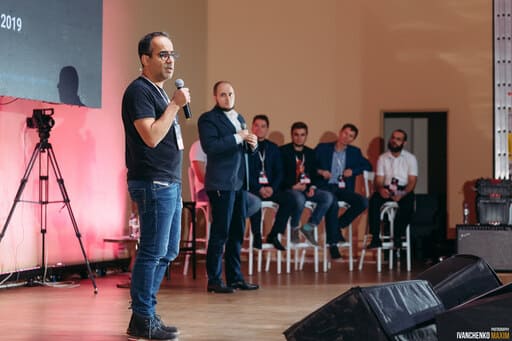An Introduction to CI CD Best Practices
This helps avoid costly integration problems down the line when multiple developers attempt to merge large, divergent, and conflicting changes into the main branch of the repository in preparation for release. Typically, CI/CD systems are set to monitor and test the changes committed to only one or a few branches. The close relationship between continuous integration, continuous delivery and continuous deployment can sometimes be confusing, especially when combined in the cyclical process known as CI/CD. Such iteration relies on well-planned and active pipelines designed to support multiple iterations in various stages of the development cycle simultaneously — and keep entire development teams constantly busy. As one build is pushed to deployment, the next build undergoes testing, while the very latest build in the cycle is coded. With CD, the software is built so that it can be deployed to production at any time.

Get CI/CD right and you’re well on the road to successful DevOps and dramatically faster code release. In our 2020 Global DevSecOps Survey, nearly 83% of survey takers said they’re getting code out the door more quickly thanks to DevOps. Since continuous deployment relies on rigorous testing tools and a mature testing culture, most software teams start with continuous delivery and integrate more automated testing over time. As an extension of continuous delivery, which automates the release of a production-ready build to a code repository, continuous deployment automates releasing an app to production.
AppSec Program Services
Together, Continuous Integration (CD) and Continuous Delivery (CD) is a key aspect that helps in this regard. It allows users to build integrated development pipelines that spread from development to production deployments across the software development process. To realize these advantages, however, you need to ensure that every change to your production environment goes through your pipeline.

To do so effectively requires collecting and analyzing metrics such as deployment frequency, deployment time and lead time for changes. Continuous integration focuses on blending the work products of individual developers together into a repository. Often, this is done several times each day, and the primary purpose is to enable early detection of integration bugs, which should eventually result in tighter cohesion and more development collaboration. The aim of continuous delivery is to minimize the friction points that are inherent in the deployment or release processes.
CI- Build: People Process and Technology
The longer a developer holds onto code without building or testing it, the more likely it is to be inconsistent with what’s stored in the central repository. Temporarily storing code from different developers in various teams into separate repositories or separate systems should be kept to a minimum. 4/ Stop using long-lived feature branches and start branching by abstraction using feature flags. This way everyone’s pushing to master and it’s easy to test features in development with the rest of the system. The trillion-dollar mistake is miscategorizing software development as a production problem, in the sense of being able to scale it up in order to be able to produce things more reliably.

Automate your software development workflows and deploy better quality code, more often. Using a continuous and iterative process to build, test, and deploy helps avoid bugs and code failures. CI build tools automatically package up files and components into release artifacts and run tests for quality, performance, and other requirements. After clearing required checks, CD tools send builds off to the operations team for further testing and staging. CI begins in shared repositories, where teams collaborate on code using version control systems (VCS) like Git.
GitLab
At the end of that process, the operations team is able to deploy an app to production quickly and easily. To make it more complicated, sometimes “continuous delivery” is used in a way that encompasses the processes of continuous deployment as well. To make a software release failsafe and robust, tracking the release’s health in a production environment is essential.
In practice, a developer will often discover boundary conflicts between new and existing code at the time of integration. If it’s done early and often, the expectation is that resolving these conflicts will be easier and less costly to perform. The big idea here is to reduce integration costs by having developers do it sooner and more frequently. If it’s done early and often, the expectation is that such conflict resolutions will be easier and less costly to perform. The feedback loop helps measure metrics like business revenue, user conversion rates, and engagement time. Use these statistics to identify improvement opportunities and work them into your pipeline.
Example CI/CD workflow
The CI/CD pipeline should be the only mechanism by which code enters the production environment. This can happen automatically at the end of successfully testing with continuous deployment practices, or through a manual promotion of tested changes approved and made available by your CI/CD system. Continuous testing implies that the CI/CD pipeline integrates test automation.
- Some unit and functionality tests will flag issues before or during the continuous integration process.
- Since 2000, a number of factors have resulted in the amount of code as well as the number of sources and software platforms proliferating.
- While you can do continuous integration without continuous delivery or deployment, you can’t really do CD without already having CI in place.
- Some tools specifically handle the integration (CI) side, some manage development and deployment (CD), while others specialize in continuous testing or related functions.
Teams can configure builds, tests, and deployment in code that is trackable and stored in a centralized source repository. They can use a declarative YAML approach or a vendor-specific programming language, such as Jenkins and Groovy, but the premise remains the same. The open-source DevOps software can be installed pretty much anywhere including on-prem, in the cloud, on containers, and on Linux distributions. This configurability prevents a lot of headaches and costs for organizations.
CI- Static Code Analysis : People Process and Technology
Agile teams can also test interactions with third-party APIs, SaaS, and other systems outside of their control using service virtualization. The key is being able to trigger these tests through the command line, a webhook, or a web service, and get a success or failure ci/cd monitoring response. Continuous integration not only packages all the software and database components, but the automation will also execute unit tests and other types of tests. Testing provides vital feedback to developers that their code changes didn’t break anything.
Since a CI/CD pipeline is a complex process, let me first address the overarching theme i.e Software Delivery. I’ll start off by explaining what is a software delivery pipeline and then define other concepts in this process such as CI, and CD. Below is a pictorial representation of a CI pipeline- https://www.globalcloudteam.com/ the workflow from developers checking in their code to its automated build, test, and final notification of the build status. In order to successfully implement and run a CI/CD pipeline, organizations need tools to prevent points of friction that slow down integration and delivery.
Continuous Delivery (CD) Explained
However, CI/CD is just one process that can drive these improvements, and there are other prerequisites to improving deployment frequencies. For example, Jenkins lists more than 1,800 plugins that support integration with third-party platforms, user interface, administration, source code management, and build management. The goal of the continuous delivery pipeline stage is to deploy new code with minimal effort, but still allow a level of human oversight.
